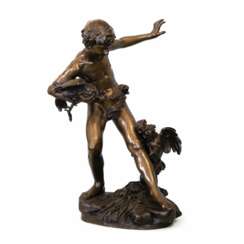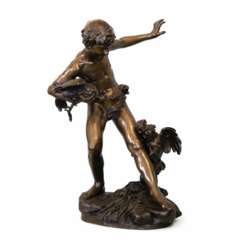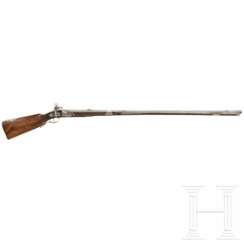paul noble

Paul Noble is a British artist, draughtsman and sculptor living and working in London.
Paul Noble studied at Sunderland Polytechnic and Humberside College of Higher Education in Hull. He was one of the five founding members of City Racing, an influential community of artists in London in the 1990s.
Although his practice encompasses drawing, sculpture and animation, Paul Noble is known primarily as a meticulous draftsman creating complex schemes. His compositions, based on fictional urban architecture, reflect disorder, circuit logic and self-portraiture at the same time. His best known conceptual project, Nobson Newtown, was first shown in a solo exhibition at Chisenhale Gallery in 1998. This series of large-scale drawings depicts a fictional city run by architect Paul, Noble's alter ego.
In addition to pencil drawings, the artist works in a combined drypoint and aquatint technique. He starts drawing from the upper left corner, gradually filling the entire space, and some large-scale drawings reach a size of 7 x 6 meters.


Paul Noble is a British artist, draughtsman and sculptor living and working in London.
Paul Noble studied at Sunderland Polytechnic and Humberside College of Higher Education in Hull. He was one of the five founding members of City Racing, an influential community of artists in London in the 1990s.
Although his practice encompasses drawing, sculpture and animation, Paul Noble is known primarily as a meticulous draftsman creating complex schemes. His compositions, based on fictional urban architecture, reflect disorder, circuit logic and self-portraiture at the same time. His best known conceptual project, Nobson Newtown, was first shown in a solo exhibition at Chisenhale Gallery in 1998. This series of large-scale drawings depicts a fictional city run by architect Paul, Noble's alter ego.
In addition to pencil drawings, the artist works in a combined drypoint and aquatint technique. He starts drawing from the upper left corner, gradually filling the entire space, and some large-scale drawings reach a size of 7 x 6 meters.


Paul Gauguin, a French artist born in Paris in 1848, is renowned for his significant contributions to Post-Impressionism, Primitivism, and Synthetism. Gauguin's art is distinguished by his experimental use of color and style, which set him apart from the traditional Impressionist movement.
Gauguin's early life was marked by a period in Peru, which influenced his artistic perspective. Initially, he pursued a career in stockbroking but soon turned to art, driven by financial necessity and a growing passion. His artistic journey began under the mentorship of Impressionist artist Camille Pissarro and through exposure to the works of other avant-garde artists.
The hallmark of Gauguin's work is his exploration of non-Western cultures, particularly during his time in Tahiti and the Marquesas Islands. This period saw the creation of some of his most famous works, including "Where Do We Come From? What Are We? Where Are We Going?" His paintings from this era, characterized by vivid colors and Symbolist themes, reflect a fusion of cultural influences and his quest for a "primitive" expression of spiritual and emotional states.
Despite his innovative style, Gauguin struggled with financial difficulties and health issues throughout his life. His work received little recognition during his lifetime, but posthumously, he gained acclaim for influencing modern artists like Pablo Picasso and Henri Matisse.
Today, Gauguin's works are celebrated in galleries and museums worldwide for their unique blend of cultural influences and artistic innovation. His enduring legacy is a testament to his unique vision and the profound impact he had on the art world.
Collectors and experts in art and antiques, stay updated on new product sales and auction events related to Paul Gauguin. Sign up now for exclusive updates and immerse yourself in the world of this visionary artist.



Paul Storr was an English goldsmith and silversmith working in the Neoclassical and other styles during the late 18th and early 19th centuries. His works range from simple tableware to magnificent sculptural pieces made for royalty.










































































